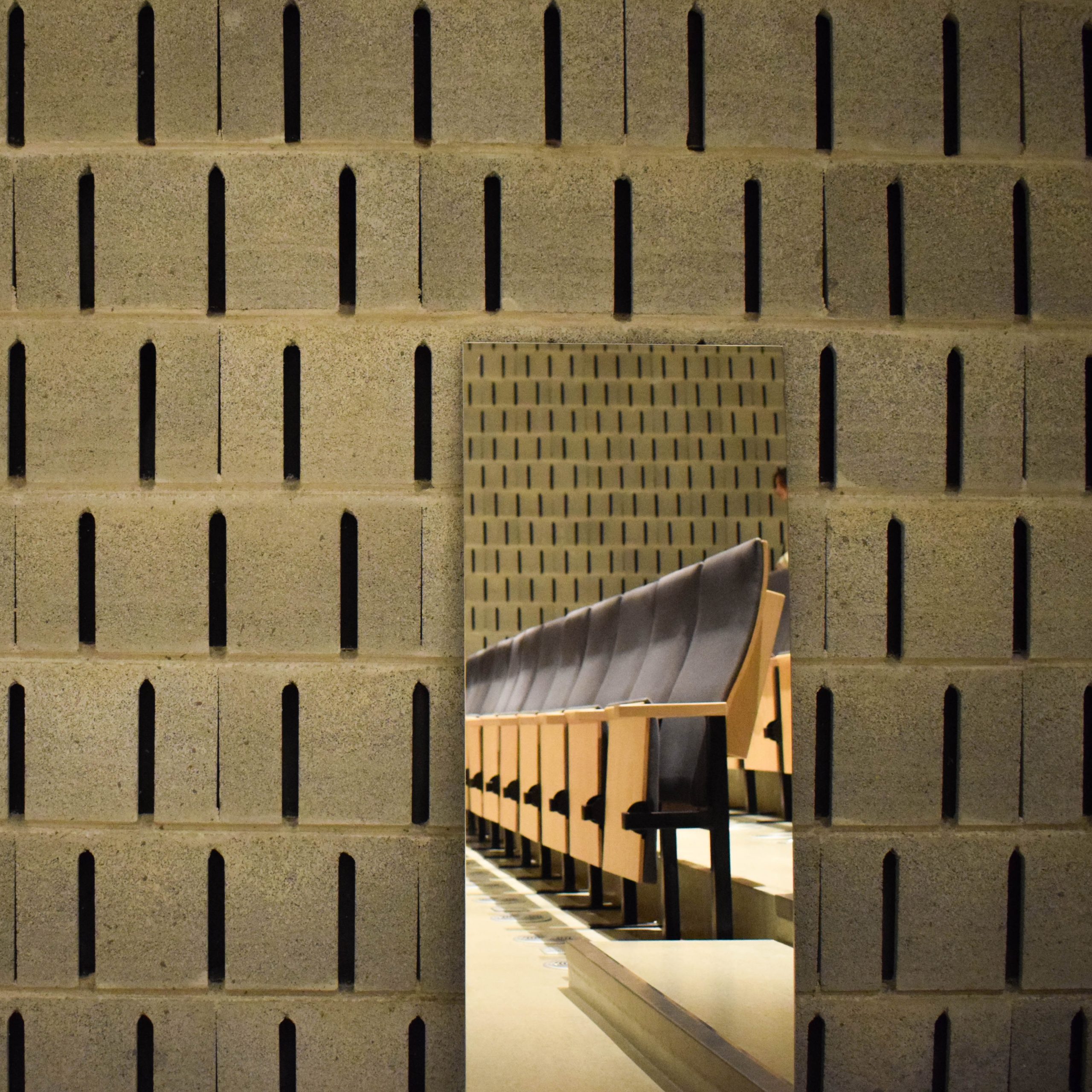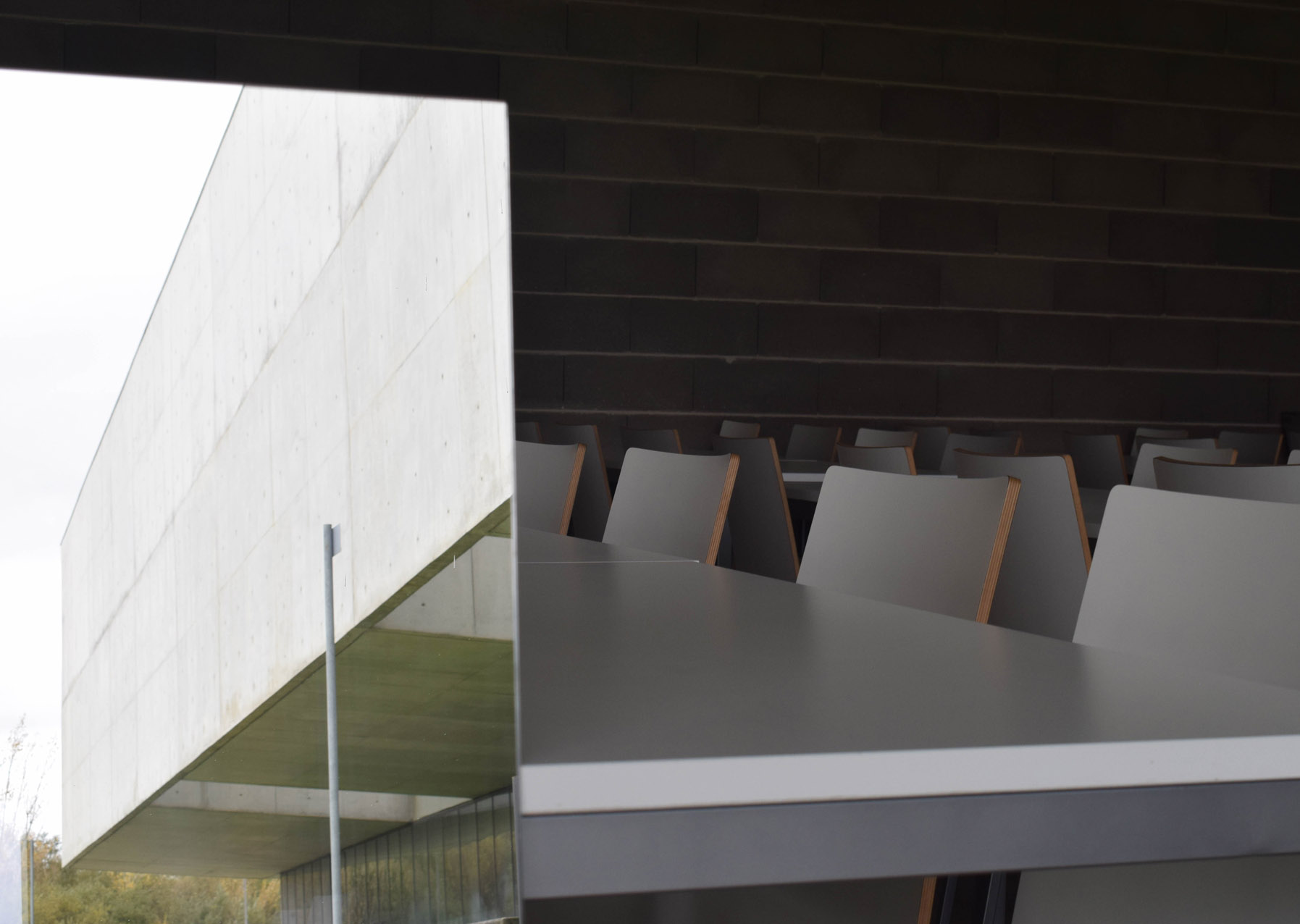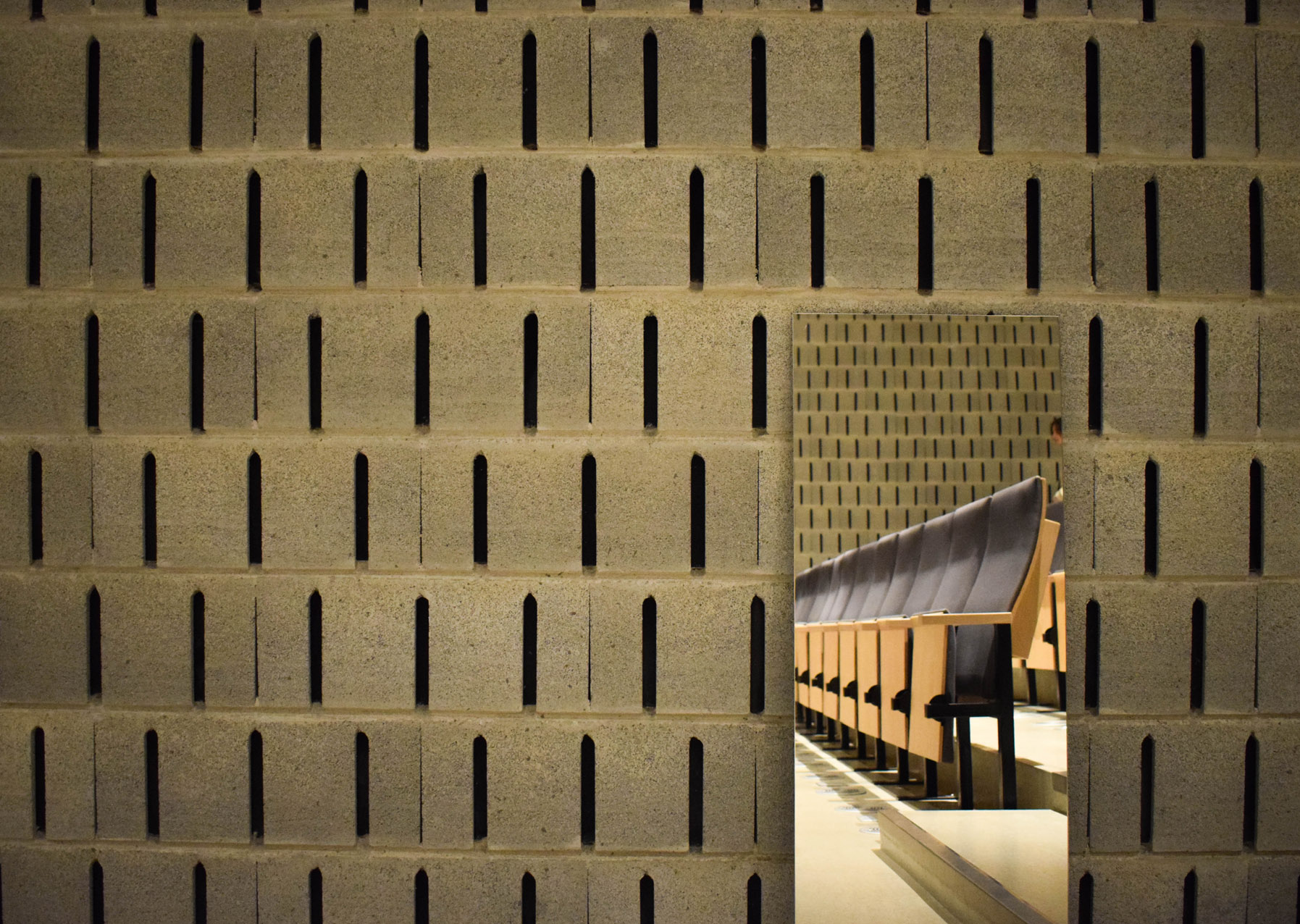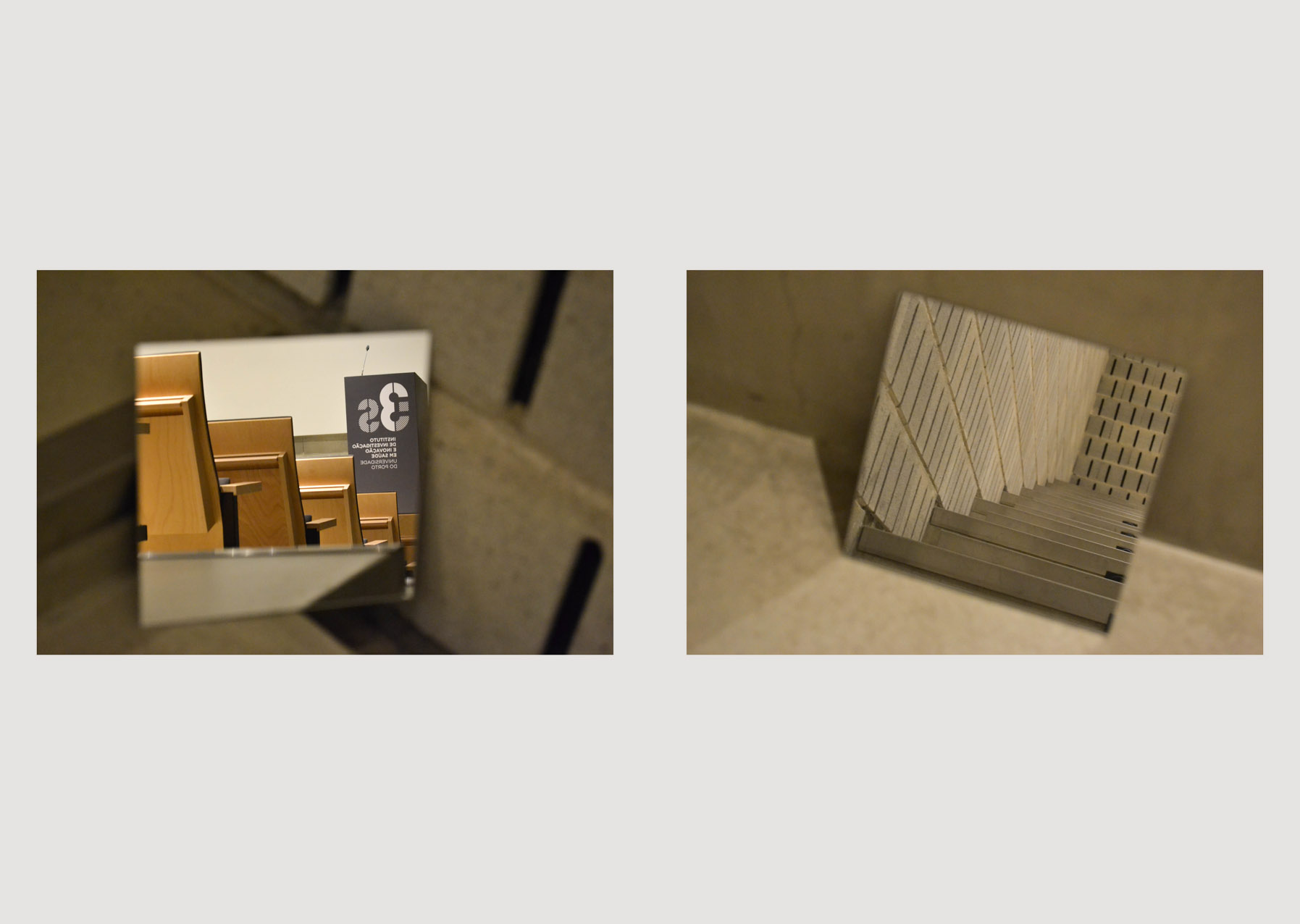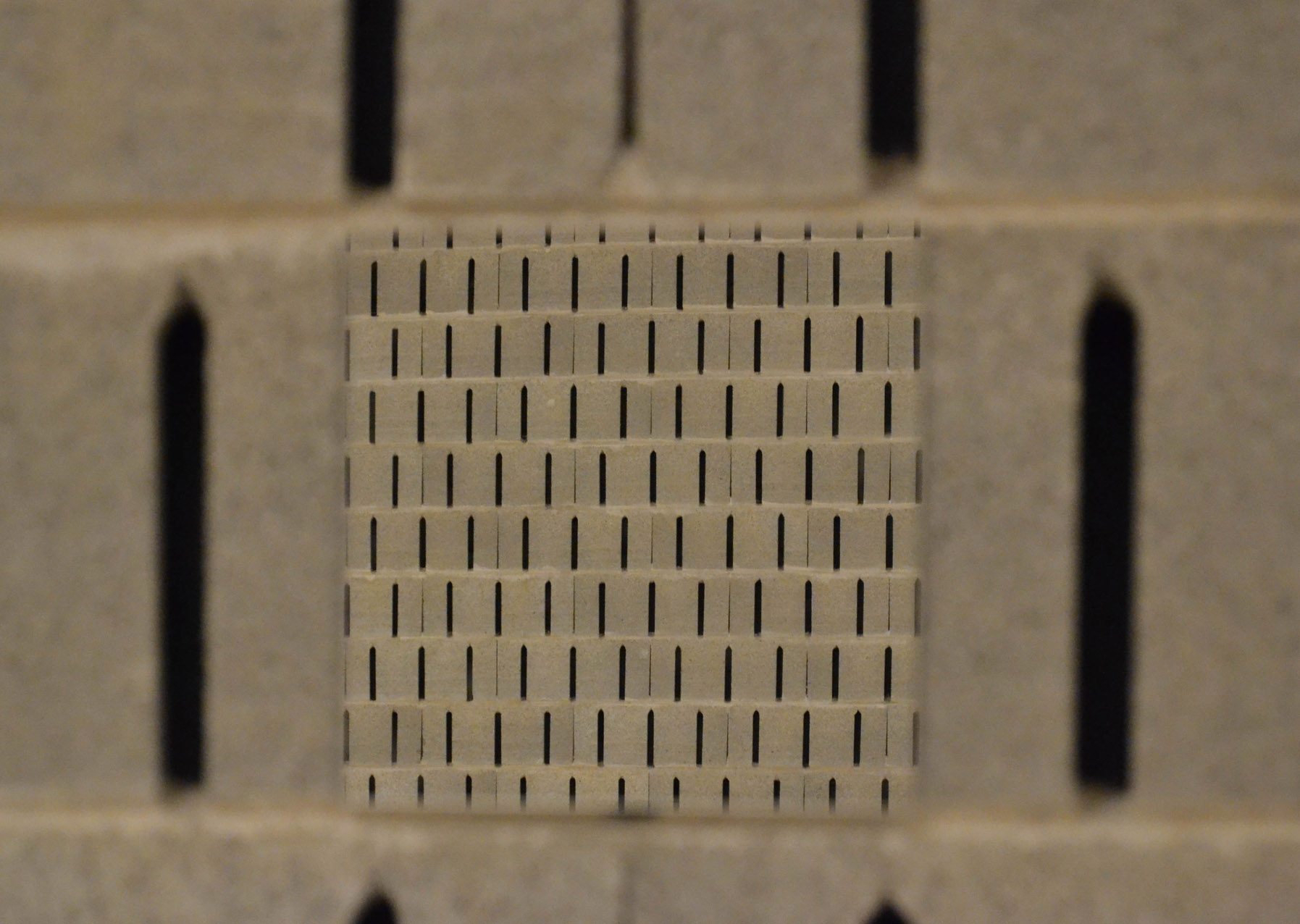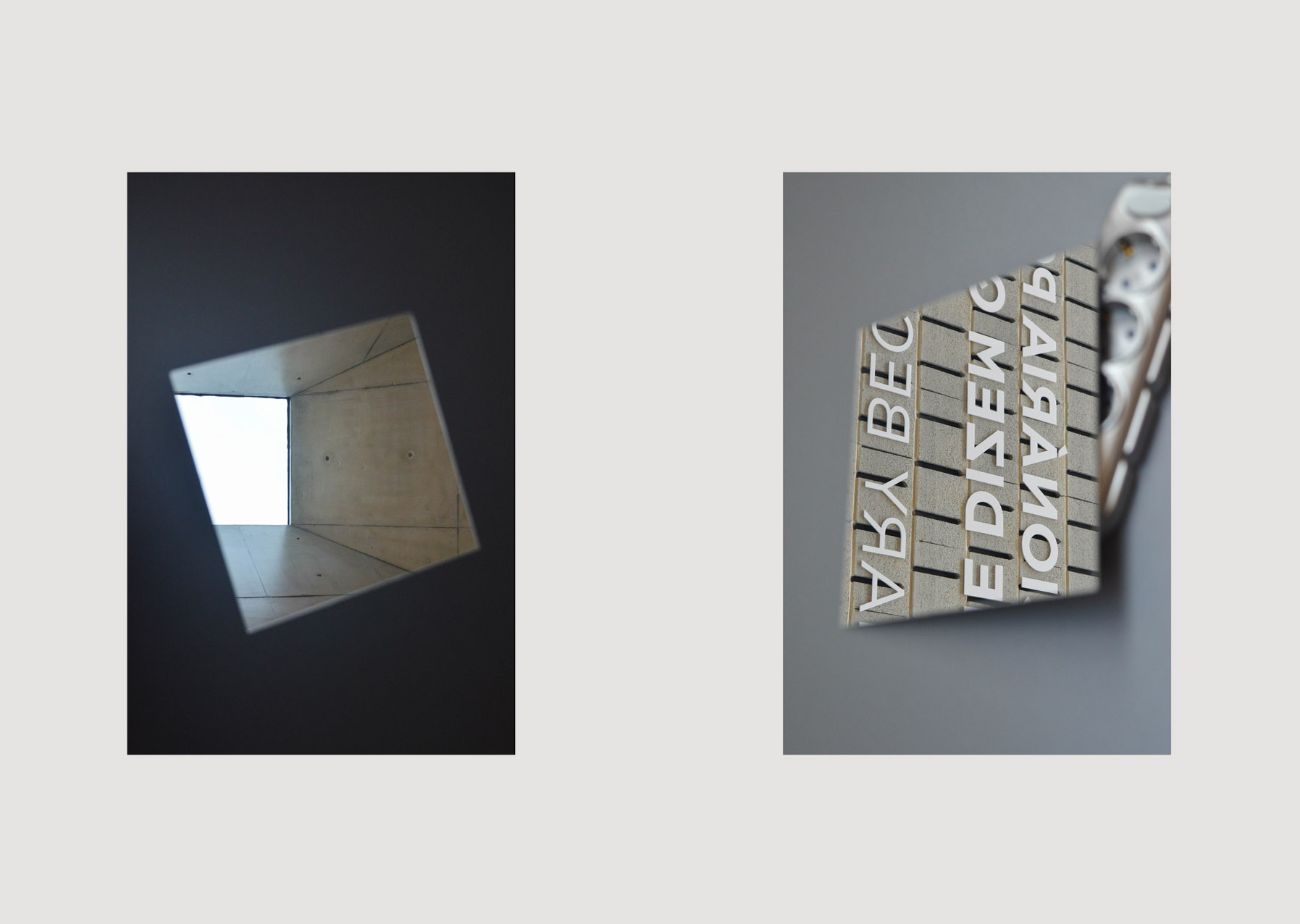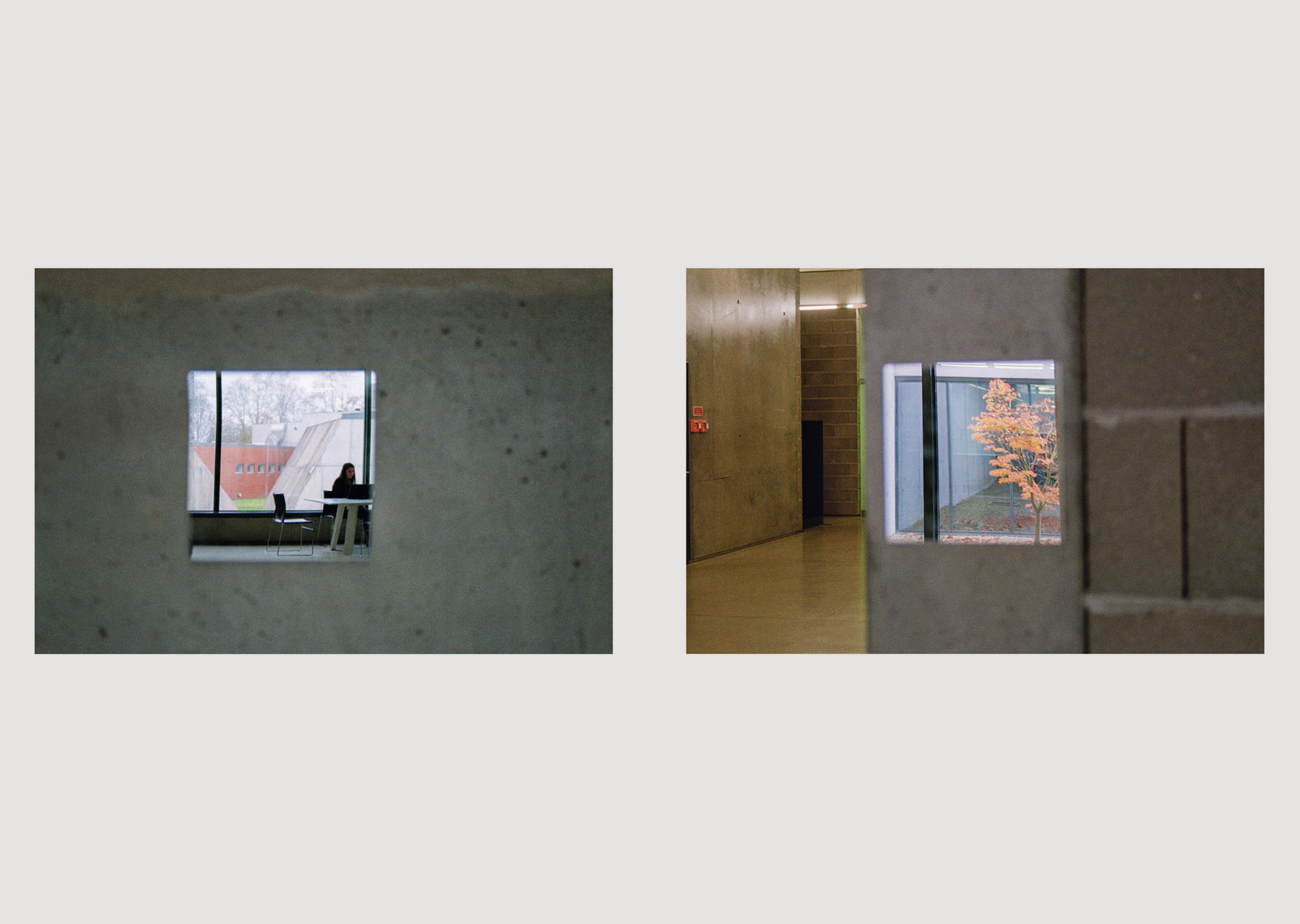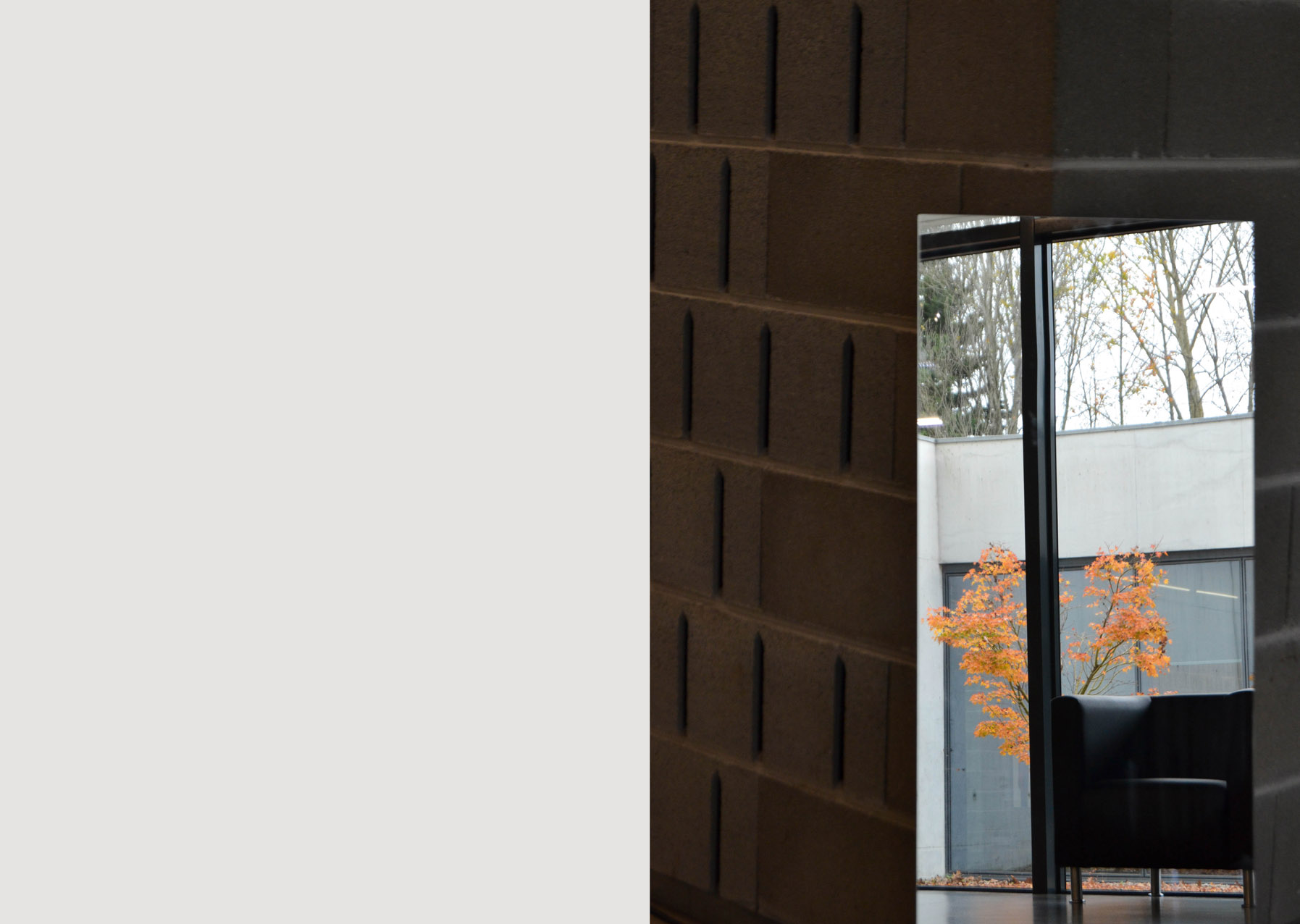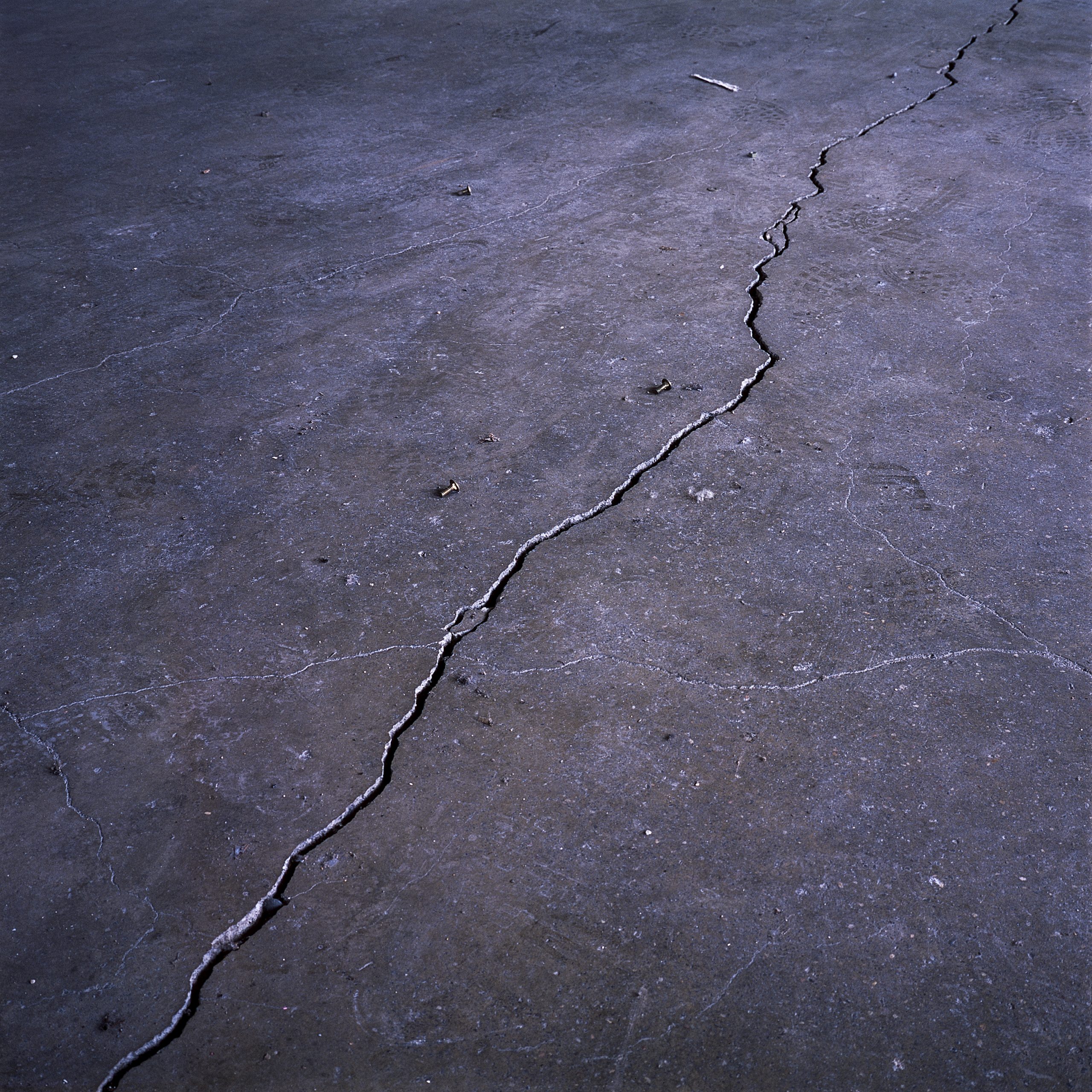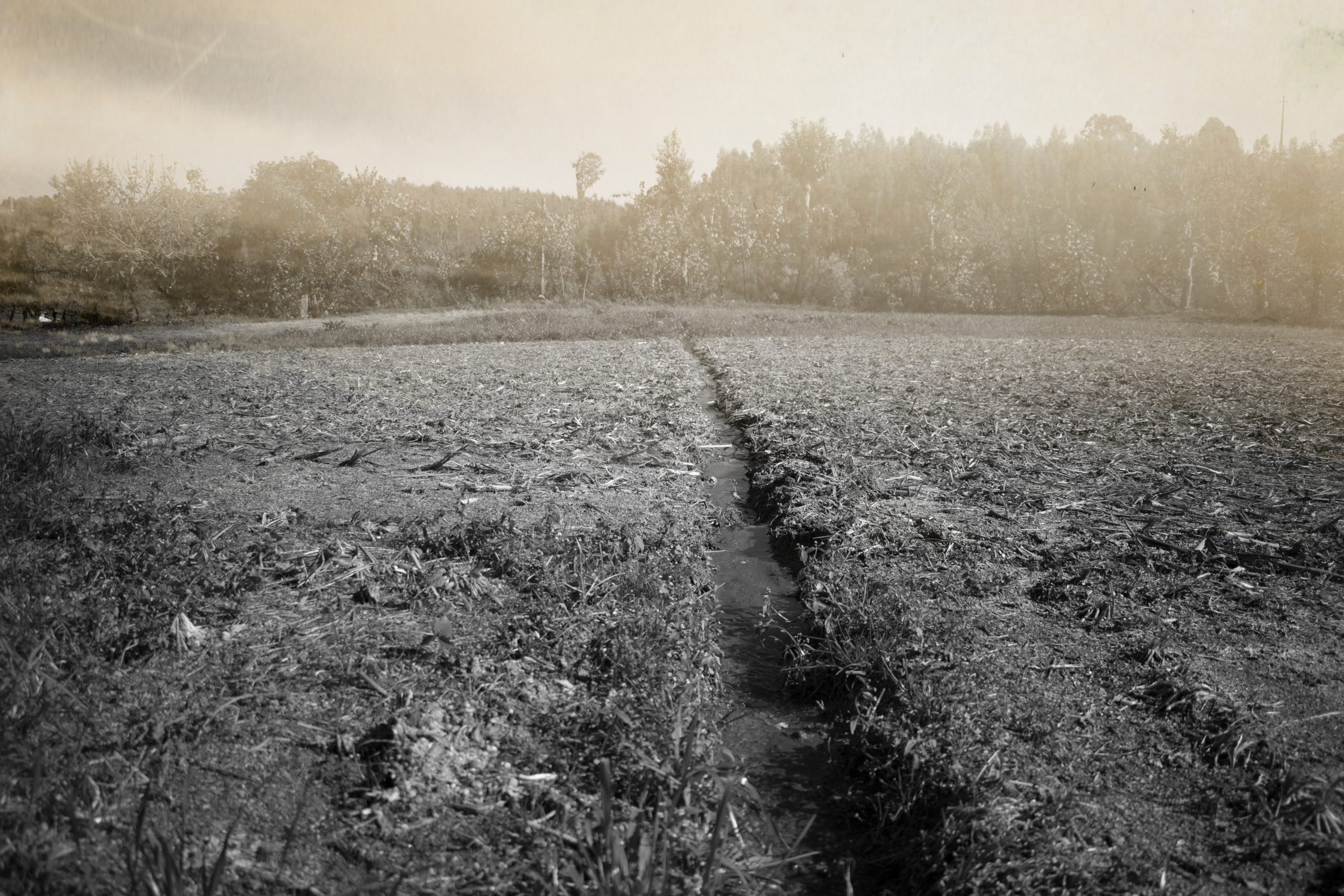Photography is a vehicle for questioning and problematising the relationships between architecture, city and territory. In this visual narrative, we apply such methods in order to perceive these relationships on an analogous scale, with the triad of Building, Public Space and Metro Station. The visual narration is a way of linking spatial transitions, relationships of light, proportion and materiality, as well as poetic-spatial readings based on the trajectories promoted by the sequence of images in the photobook.
The purpose in this context is to understand the connections between the i3S building (Institute of Innovation and Research in Health), belonging to the University of Porto, and its immediate surroundings, consisting of buildings, public spaces and the University Pole Metro station. The building was designed by Serôdio, Furtado Arquitetos and is home to three health research institutes, as well as researchers from various University of Porto faculties. The programme is based on collaborative spaces between institutes, with public areas on the ground floor and research and experimental rooms on the upper floors. The spaces are articulated by central openings, always marked by the geometry of exposed concrete.
Ler mais
The idea of Ponto de Reflexão is rooted in the theme of reflection both as a physical phenomenon and as a mental action following an analysis. The narrative starts from the outside, from a broader, everyday perspective, closer to Paolo Rosselli’s point of view[1], to a level of abstraction and detail typical of Helene Binet’s photography[2]. It is precisely this physical reflection, present on mirrored or glass surfaces, that makes it possible to show the link between the three objects of study: the institute, the public space and the station.
The narrative is divided into three parts: Explorar, Abstrair and Reflectir. This partition aims to gradually appropriate the space as an intellectual process of visual exploration and abstraction, starting with the simple identification of the landscapes and their constituent elements, and finally arriving at deliberate intervention in search of a constructed image. Like an architectural promenade, the images arranged in each part seek to repeat the journey from the metro station to the i3S interiors, on different scales and degrees of abstraction. The study of the photographic works of Paolo Rosselli and Helene Binet was fundamental in regard to the conception of a narrative strategy.
Explorar: Images deal with first impressions and suggestions, which are close to P. Rosselli’s neurotic impulse, i.e. the recording of images that attract us through generational links and references, which subliminally constitute our visual imaginary. These are surfaces, colours, shapes, everyday events. This first section is the phase in which there is an exploration of the context, the first contact and relationship. These are the details, colours, shapes and everyday events that attract our attention in the same way as the neurotic impulse. In these attractive, unconscious aspects. H. Binet’s photographic work was also a fundamental influence, where the gaze focussed on the details of light, materiality and lines construction.
Abstrair: The physical reflection used is that which is purely present, on the surfaces of the building or in the context of the surroundings. Spaces that, in reality, look at each other, relate to each other, until, in this part of the narrative, they reach a point of total abstraction. They overlap through existing reflective surfaces and the reflection takes up all or most of the images. This part aims to show the similar or different characteristics of the two or more related spaces in the same image. Unreal spatialities are thus created using the real.
Reflectir: The mirror is used in the space as a means of physical and mental reflection. It’s a play on words with the verb reflect, which has two meanings: “to reproduce an image” and “to think”. Therefore, this part brings together photos that seek to focus attention on critical points, details.
Added to the narrative is the materiality of the i3S building, characterised by closed, introspective environments where the outside can be seen only occasionally. It is a rough materiality, sometimes with wrinkled surfaces, sometimes with smooth surfaces, depending on the treatment given to the concrete. Precisely whether it’s naturally or artificially lit, i3S presents spaces with different languages to the images, from the acoustic block to the structural walls. These materialities act differently when illuminated. The acoustic blocks give rhythm and identity to the interior, which can be associated with a slow time of introspective spaces. More than understanding photography as a way of studying and understanding architecture, we also intend to use it as an instrument for questioning and criticising the building studied, since we will try to record in the final part of the project interventions deliberately arranged by the group, using mirrors that invite the exterior space to the interior concrete walls in the form of a detail, the Reflectir.
[1] Paolo Rosselli (1952-), Italian photographer born in Milan, with an academic degree on architecture (Politecnico di Milano).
[2] Helene Binet (1959 -), Swiss photographer born in Sorengo, with an academic degree on Istituto Europeo di Design de Roma.


